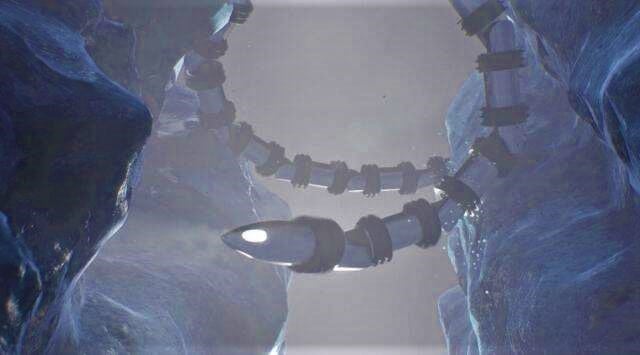In recent years, icy moons like Europa or Enceladus have emerged as some of the likeliest places to host alien life in our solar system. Beneath the frozen surface, these moons hold liquid water — and where there is water, there could be life. But how do you explore such inhospitable worlds? The answer may slither in the shape of an eel-like robot.
The time it takes to transmit radio signals to Mars from Earth is approximately five to 20 minutes, depending on where the planets are at the time. Fortunately, that is manageable for a Mars rover or lander. However, once we land robot explorers on other, farther planets, it gets much more difficult. Because of this lag, robots will have to think pretty much entirely for themselves.
Now NASA’s Jet Propulsion Laboratory (JPL) has created an extremely versatile robot not only with the ability to do its own thinking but to traverse glacial walls and icy oceans.
EELS
Dubbed EELS for Exobiology Extant Life Surveyor, the snake-like explorer is inspired by the search for life in the ocean hiding below the icy crust of Saturn’s moon, Enceladus. The robot is built to autonomously navigate and calculate risk without human input. It can also search areas such as undulating sand and ice, cliff walls, craters, underground lava tubes, and labyrinthine spaces within glaciers.
“It has the capability to go to locations where other robots can’t go. Though some robots are better at one particular type of terrain or other, the idea for EELS is the ability to do it all,” said JPL’s Matthew Robinson, EELS project manager. “When you’re going places where you don’t know what you’ll find, you want to send a versatile, risk-aware robot that’s prepared for uncertainty – and can make decisions on its own.”
EELS, weighing about 220 pounds and measuring 13 feet in length, comprises 10 identical segments that rotate using screw threads for propulsion, traction, and grip. The team has been trying out a variety of screws, from 8-inch-diameter 3D-printed plastic screws for testing on looser terrain to narrower, sharper black metal screws for ice.
“Imagine a car driving autonomously, but there are no stop signs, no traffic signals, not even any roads. The robot has to figure out what the road is and try to follow it,” said the project’s autonomy lead, Rohan Thakker. “Then it needs to go down a 100-foot drop and not fall.”
To navigate, the robot creates a 3D map of its surroundings using four pairs of stereo cameras and lidar, — somewhat similar to how a vacuum cleaner would navigate the inside of your house. Algorithms figure out the safest path forward using data from the sensors. The robot will eventually contain 48 actuators, giving it the flexibility to assume multiple configurations.
The EELS team has been conducting monthly field tests since 2020 and refining the hardware and software that allows the robot to operate autonomously. EELS development is different from traditional spacecraft, with many quick cycles of testing and correcting. This explorer is designed to autonomously sense its environment, calculate risk, travel, and gather data with yet-to-be-determined science instruments. When something goes wrong, the goal is for the robot to recover on its own, without human assistance.
In September, the EELS team will test the robot’s subsurface mobility at Athabasca Glacier in the Canadian Rockies, an analog for icy moons in our solar system. The team will drop a small sensor suite to monitor glacier chemical and physical properties that EELS will eventually be able to deploy to remote sites.
“Our focus so far has been on autonomous capability and mobility, but eventually we’ll look at what science instruments we can integrate with EELS,” Robinson said. “Scientists tell us where they want to go, what they’re most excited about, and we’ll provide a robot that will get them there. How? Like a startup, we just have to build it.”



